Smart Pills: Drugs to Boost Brain Power
IQ-elevating agents that can boost brain power are being used by over 10% of university students. But how do these cognitive-equivalents of anabolic steroids for the brain actually work, what are their effects and are they safe? Moreover, is the advantage they confer an ethical one? And if not, should universities be screening students ahead of exams to deter their use? Meanwhile, in the news this week, we find out how lasers can cut complications in cataract surgery, why some people are allergic to wine, we hook up with the highlights from the world's biggest neuroscience meeting including the discovery of how the eye talks to the brain, and we hear how scientists have solved a long-standing mystery relating the structure of the placenta...
In this episode

Snap bracelets from tape measures - Bistable structures
Transcript
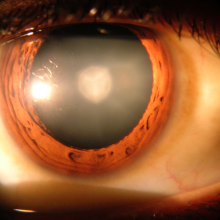
02:09 - Laser cataract surgery a sight for sore eyes
Laser cataract surgery a sight for sore eyes
One of the world's most commonly performed surgical procedures - cataract surgery - could soon be revolutionised with a laser. Stanford University scientist Daniel Palanker and his colleagues, writing in Science Translational Medicine, have developed a laser mapping and cutting technique to significantly improve the safety and success of lens replacement surgery, which up to one third of the developed world's population undergo 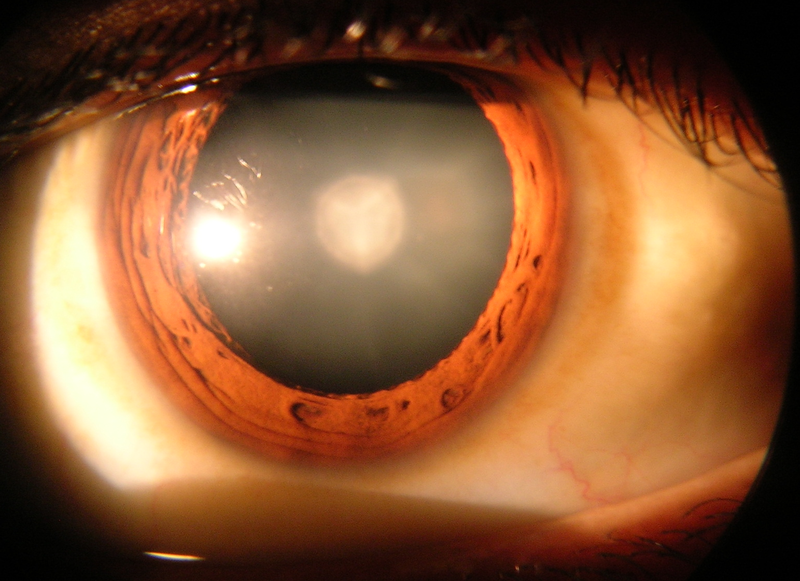 in their lifetimes.
in their lifetimes.
Cataracts occur when the lens, which sits at the front of the eye behind the cornea, becomes cloudy; this hinders the passage of light into the eye, impairing visual acuity, colour perception and making it especially difficult to see in low light conditions. Ophthalmic surgeons remedy the situation by first making an incision in the front part of the eye. They then painstakingly perform a technique called a capsulorhexis, which involves opening up a circular aperture in the capsular membrane that holds the damaged lens. This incision must be circular to avoid producing any "edges" that would be weak spots prone to rupture. When this is complete the lens is broken up, usually by ultrasound, and removed through the aperture. A replacement prosthetic lens is then inserted in its place. Although the the operation has an very high success rate, there are complications.
The trickiest step is performing the capsulorhexis, which relies entirely on the skill of the surgeon and his or her estimation of the "correct" placement of the incisions during the procedure. To remove this uncertainty, the Stanford team have designed a femtosecond laser-assisted technique that initially maps out the eye, performs the capsulorhexis procedure and also cuts up the lens into tiny fragments facilitating its removal. Using pig's eyes to hone the technique and then rabbits to test its safety, the new approach produced capsulorhexis results that were twice as strong as those performed free-hand by a surgeon, thus potentially reducing the risk of complications. The system was then tested on 50 patients - though not as a blind trial (!) - 30 of them in a cross-over study whereby one eye was treated via the traditional surgical technique, the other using the laser.
There were no negative outcomes, confirming the safety and effectiveness of the approach, the cuts made by laser were 50 times more precise than those made by hand and, although stastically not significant, the laser-treated individuals also had slightly better visual acuity afterwards.

05:51 - Why some people are allergic to wine
Why some people are allergic to wine
A lot of us like a nice glass of wine at the end of the day, but for around 500 million people in the world, that's not so much fun, as they have an allergy to wine. It's apparently a bit like having a hayfever attack, with itchy eyes and sneezing. Now a group from the University of Southern Denmark have found out exactly what it is in the wine that makes these people react to it.
It's a type of molecule called a glycoprotein, which is also what causes other allergic reactions like those to pollen and dust mites. These are molecules made up of sugar and protein molecules joined together and they're really important to life - they're found in our cell membranes, some important hormones are glycoproteins, and they also play a key role in immune response. The kind of glycoproteins on the outside of an invading pathogen like a bacterium for example help the immune system to identify it. 
So the team led by Guiseppe Palmisano tested an italian chardonnay using a mass spectrometer to see if there were glycoproteins present that might be causing these reactions. They identified 28 different glycoproteins in the wine, contributed by both the grapes and the yeast used to make the wine. Many of the glycoproteins from the grapes were very similar in structure to ones known from other plants and fruit that are known to cause allergic reactions, and it's the structure of the glycoprotein that is important in it being an allergen or not.
So the team suggested that this could be a step towards creating low-allergenic wines, although this would probably be a fair way off as the very glycoproteins that can cause these reactions are essential for the palate and the structure of the wine, and it's not clear exactly which of the glycoproteins present might be responsible, so there's still work to be done there...
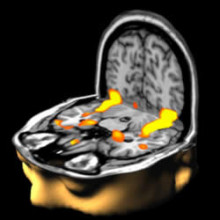
07:57 - Highlights from the Society for Neuroscience Meeting 2010
Highlights from the Society for Neuroscience Meeting 2010
with Smitha Mundasad
Chris - Also this week, the annual meeting of the Society for Neuroscience took place in San Diego, California; a nice sunny place. This is actually the largest meeting of neuroscientists from around the world who meet to discuss their latest research and the progress they're making in understanding how the brain works. Naked Scientist Smitha Mundasad was there for all the action and she's with us now to tell us what she got up to. Hello, Smitha.
Smitha - Hi, Chris.
Chris - So the weather here, decidedly worse than California then?
Smitha - It's so much nicer in California.
Chris - So, a shame to be back, but what did you get up to?
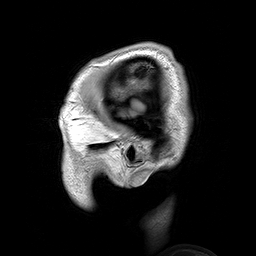 Smitha - Well, with over 30,000 neuroscientists in attendance, this year's Society for Neuroscience Conference in San Diego, was a hot bed of new research and exciting ideas. One of the meeting's highlights was news that researchers have found a way for people to control computer cursors with their thoughts alone. Using MRI machines connected to computers, scientists from the University of Pennsylvania School of Medicine had 14 participants think alternatively of two thoughts: One, to think about playing tennis; and the other, to imagine going from room to room in a familiar place. Analysing the brain activity from these two different scenarios, the researchers were able to show that the computers could distinguish two distinct patterns of brain activity for each thought. While still in the MRI scanner, the participants were asked to use these thoughts to control the movement of a computer cursor on a screen. This means that they had near instant feedback of how well they could control their own thoughts. Lead author, Dr. Anna Rose Childress explains that how new approach could have major therapeutic implications, for example, in the treatment of addiction...
Smitha - Well, with over 30,000 neuroscientists in attendance, this year's Society for Neuroscience Conference in San Diego, was a hot bed of new research and exciting ideas. One of the meeting's highlights was news that researchers have found a way for people to control computer cursors with their thoughts alone. Using MRI machines connected to computers, scientists from the University of Pennsylvania School of Medicine had 14 participants think alternatively of two thoughts: One, to think about playing tennis; and the other, to imagine going from room to room in a familiar place. Analysing the brain activity from these two different scenarios, the researchers were able to show that the computers could distinguish two distinct patterns of brain activity for each thought. While still in the MRI scanner, the participants were asked to use these thoughts to control the movement of a computer cursor on a screen. This means that they had near instant feedback of how well they could control their own thoughts. Lead author, Dr. Anna Rose Childress explains that how new approach could have major therapeutic implications, for example, in the treatment of addiction...
Anna - Control of the screen cursor is a really good measure of how well a person can alternate their thoughts, between tennis and room by room. The thoughts, of course, are completely arbitrary, but the act of controlling them and shifting them does require considerable attention and cognitive control. For our patients, when they are in the real world and maintaining cognitive control while they're driving their car down the street in a cocaine neighbourhood, what they describe is that they will be intruded on by a brief vision of something cocaine related and they become derailed. So we're going to be able to model that with this task. We'll have people performing this task and be blipping in very brief cocaine images and be able to actually see the brain struggling to maintain control. So it's a very sensitive probe for disrupted cognitive control in pathological conditions such as addiction for example.
Smitha - Anna Rose Childress from the University of Pennsylvania.
In other news from the conference, again combining the disciplines of computing and neuroscience, researchers have found a novel way to make blind mice see. There's over 25 million people worldwide who suffer from degenerative diseases of the retina, often resulting in partial sight and blindness. Photoreceptors on the retina normally receive light and then, with the help of retinal ganglion cells, this is converted into electrical impulses that can be understood by the brain. But with many retinal diseases, these photoreceptors stop working.
 Existing retinal prosthesis offer very limited hope. Implanting electrodes into the retinal cells can allow people to make out spots of light or edges of objects, but very little in the way of real vision.
Existing retinal prosthesis offer very limited hope. Implanting electrodes into the retinal cells can allow people to make out spots of light or edges of objects, but very little in the way of real vision.
But now, researchers at Weill Cornell Medical College in New York have taken a new approach. By analysing the light input and then the corresponding neural output of the healthy mice retinal cells, they were actually able to mimic the way the retina converts light into electrical signals. They've actually essentially cracked the neural code used by the brain. This code can then be used to produce a much sharper, clearer image in mouse models. The team hope to work with primates next and then humans very soon. Lead author, Sheila Nirenberg, explains how her research differs from other approaches...
Sheila - Our common analogy is that the patient's eye is like a digital camera with damaged pixels. So the more of the pixels you replace, the better the picture you're going to get. What our research shows is that there's another factor that's just as critical. Not only do you need to stimulate large numbers of cells, but you also have to stimulate them with the code that the eye is sending to the brain. This is because the camera analogy really only holds in part. The eye does essentially take a picture, but then it goes much further. It processes the picture. It extracts information from it and then it converts that information into a code that the brain can read. So, to make an effective prosthetic device, you've really got to have both these functions: acquiring the picture and then converting the picture into a code that the brain can make use of, and I think we really have this now. We have both of these components.
Smitha - Sheila Nirenberg from Weill Cornell Medical College, New York.
There was also good news for musicians at the Society for Neuroscience Conference. Benjamin Zendel of the University of Toronto presented research that suggests that musicians may actually be protected from some of the age-related changes in the auditory cortex of the brain. The researchers presented participants with complex sounds under two conditions: One, where they were distracted by another activity and the other, where they were focused on the sounds. During these experiments, the participant's brain activity was measured using EEG. The brain activity patterns of older people with musical training were very similar to that of young people during the attentive listening task, but older non-musicians showed typical age-related changes. Lead author, Benjamin Zendel...
Benjamin - A lot of research has shown that musicians do better on many hearing tasks. They have more acute hearing, they're better at making fine distinctions between sounds, and also the exact same things that change with age. So as you get older, it's harder to make these fine distinctions between sound and that contributes to difficulty understanding speech in noisy environments like at a noisy restaurant or a noisy coffee shop, and so, the really exciting part of this research is that older musicians seem to maintain some of those abilities and it's reflected in changes in the auditory cortex. That there are changes in the functional components of the auditory cortex in older musicians that make their brains effectively look like that of the younger adults.
Smitha - So those piano lessons might have been a bit more valuable than I thought! That was Benjamin Zendel from the University of Toronto.

14:30 - Bacteria cause colour change in aphids
Bacteria cause colour change in aphids
This week, researchers in Japan have shown that the colour of pea aphids can be changed by bacteria living inside them.
The reason this is such an interesting discovery is that colour is a really important aspect of an animal's life. It can influence predators, prey and potential mates.
The team, led by Tsutomu Tsuchida studied these pea aphids, which are from France, and are found in both red and green morphs in the wild. Red ones tend to get eaten more by ladybirds, but the green ones tend to be attacked by parasitoid wasps. So when the team were looking at the wild populations, they noticed that some of the green aphids were having red offspring, but that the red offspring gradually became green as they aged. They wondered what might be causing the colour change, so took a closer look at the aphids and found several different types of endosymbiotic bacteria were living in them.
 An endosymbiont is an organism that lives inside another organism, but the interaction between them benefits both parties - it has to, otherwise it would be considered to be a parasite or an infection. One example would be corals - they have tiny algae living within their cells that photosynthesise - the corals gain energy from their symbionts, and the algae have ready access to nutrients and safety from predators.
An endosymbiont is an organism that lives inside another organism, but the interaction between them benefits both parties - it has to, otherwise it would be considered to be a parasite or an infection. One example would be corals - they have tiny algae living within their cells that photosynthesise - the corals gain energy from their symbionts, and the algae have ready access to nutrients and safety from predators.
So, to find out if the endosymbiotic bacteria in the aphids were involved in the colour changing, the team treated groups of aphids with antibiotics to knock out some of the bacteria. And in a second experiment they injected uninfected aphids with haemolymph, which is essentially like the blood, from infected aphids.
They found that one of the groups of bacteria, called Rickettsiella, was responsible for the colour change.When the other bacteria were killed off using antibiotics, the aphids' colour still changed if Rickettsiella was present, and when it was injected into uninfected red aphids, it caused their red offspring to become green as they aged. When the red aphids produced their sex cells, the bacteria hitched a ride in those cells and were then present in the offspring, making them change colour.The group suggested that this colour change may protect them from predation by ladybirds, but that Rickettsiella is also usually found with two other symbiont infections that help protect against the parasitoid wasps, so helping to offset the danger there of being green.
So it's an example of some of the really complex relationships that there are between insects and bacteria. I mean these ones do convey an advantage by being involved in changing the colour of the aphids, but there are some that are even more bizarre, like Wolbachia, which can cause sex changes, kill off all the males in a brood of insect babies and is estimated to infect up to 70% of all insect species.

17:20 - Plugging into the placenta
Plugging into the placenta
Scientists have solved a long-standing mystery relating the structure of the placenta, the lifeline that connects mother and baby during embryonic development. For over 100 years anatomists have been scratching their heads trying to explain why, despite the function being the same for every animal, the placentae of different species were so dramatically different in structure.
Now two Durham University scientists, Isabella Capellini and Robert Barton, writing in the journal The American Naturalist, think they know why. Their study compared 109 different animal species, including humans, taking into account the size and length of gestation of each animal as well as the stuctures of their corresponding placentae. What they found is that the simpler the structure of the placenta, the longer the gestation. So animals like a human or an ape, which have relatively simple placentae comprising just "fingers" of foetal tissue projecting into the wall of the uterus to contact maternal blood, tend to have a longer gestation, while species like dogs and leopards, which have relatively short gestation times, have extremely complex and highly folded "labythine" placental structures.
they found is that the simpler the structure of the placenta, the longer the gestation. So animals like a human or an ape, which have relatively simple placentae comprising just "fingers" of foetal tissue projecting into the wall of the uterus to contact maternal blood, tend to have a longer gestation, while species like dogs and leopards, which have relatively short gestation times, have extremely complex and highly folded "labythine" placental structures.
This latter configuration provides a very high surface area through which nutrients can be picked up by the developing foetus, while the simpler stucture adopted by humans have a lower surface area and hence a more limited rate of nutrient provision to a baby, prolonging the gestation. Why this is important is that it reflects the metabolic cost of pregnancy and is probably a protective mechanism by which a mother controls the resource conflict between her needs and those of the developing baby. Now this relationship is understood, Robert Barton points out, "it will be interesting to track down the genes involved and this will inevitably have clinical consequences too, informing our understanding of pregnancy-related conditions like pre-eclampsia."
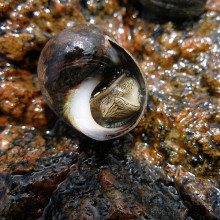
19:55 - Diversity in Rock Pools - A Marine Mesocosm
Diversity in Rock Pools - A Marine Mesocosm
with Sue Nelson & Stuart Jenkins, Bangor University
Sarah - A visit to any British seaside is never complete without a good poke around in a rock pool and luckily for them, some scientists get to do that as a day job! Planet Earth podcast presenter Sue Nelson travelled to the Anglesey coastline to meet Stuart Jenkins from the School of Ocean Sciences at Bangor University to see what they could find...
Stuart - Here we are at a medium sized rock pool. It's about half a square meter in size, about 30 centimetres deep, and first of all, what we can see is that it's literally full of marine life.
 Sue - Hold on. You say literally full of marine life. All I can see is seaweed and - would this be called seaweed as well?
Sue - Hold on. You say literally full of marine life. All I can see is seaweed and - would this be called seaweed as well?
Stuart - Yup!
Sue - This sort of more frond-like plant?
Stuart - Yes. Don't discount the seaweed! We've got probably about 30 species of seaweed in this rock pool.
Sue - Good grief!
Stuart - We've got this large, canopy forming algae called Fucus serratus, growing on the Fucus serratus are lots of brown, slimy Ectocarpus. We've got the brightly coloured green, so we have some Ulva lactuca, some Ulva linza, we have these beautiful red algae. This is a species of Ceramium. So, for these, all these limpets and grazing snails, the molluscs, for those guys, the seaweed forms a base of the food chain. Also, the seaweed acts like a mini-forest. So if you imagine you're an amphipod or a prawn, or a crab, you want somewhere to hide so living in amongst that seaweed, the whole diversity of marine life which relies on that for shelter, somewhere to hang out, and perhaps to act as an ambush predator.
Sue - You're interested in particular in the diversity of life that's in a rock pool. Why did you choose a rock pool when you've got, even behind us, we've got an enormous amount of water and then going into the seas and going into the oceans?
Stuart - Man is having a huge impact on our oceans and our coastal waters, and that impact can have a negative effect on our biodiversity. When we lose biodiversity, that's bad in itself, but we can ask the question: "If we lose species, what effect is that going to have on the functioning of our ecosystems?" Now as a marine ecologist, to try to answer that question, it's really hard working out in the open ocean. I like to do experiments and I like to manipulate biodiversity. A rock pool such as this provides an amazing mesocosm - a mini world. An isolated body of water when the tide goes out, then I can manipulate the diversity and look at how that affects various response variables that I measure. Things like productivity and the uptake of nutrients.
Sue - When you change the diversity of rock pools for seaweed species, what did you find?
Stuart - We found that in the pools with high functional diversity, with seaweed species which were very different from each other, we've got greater productivity, and what I mean by productivity is, the seaweed grew faster. If the seaweed grows faster, it provides a lot more food for all those animals that live in the pool, the snails, the shrimps, and the fish, so we get a much more diverse and healthy ecosystem.
Sue - Did you do this with sort of any larger life forms?
Stuart - As well as looking at seaweeds, we've also looked at some of the animals that live in these pools. We can see here a number of different grazing molluscs, so we can see the typical limpets that we're all familiar with. We can see things like the common periwinkle, Littorina littorea.
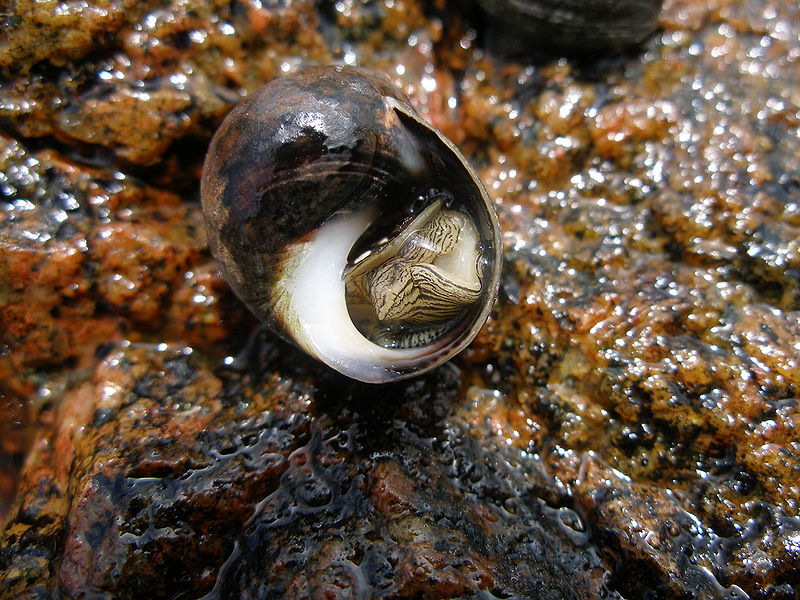 Sue - Which is a common periwinkle?
Sue - Which is a common periwinkle?
Stuart - Just this one, just here. But also, a whole range of other snails that look similar to that. The question is, all these snails, these grazing molluscs look very similar. Does that diversity actually matter? So what we did in rock pools was again, we performed an experiment and we manipulated the diversity of those grazing molluscs. Here, we looked simply at the ability of the rock pool to go from a very bare area. We cleared the rock pools first and then for all seaweeds, those diverse seaweeds to grow.
Sue - And what did you find?
Stuart - What we found with it, the actual number of species didn't matter. It was certain key species which had a much larger effect on the amount of food eaten and other species, in particular, the limpet that we can see just here. What that says in terms of our biodiversity research, is that it's important to understand what species do. The number of species is important, but actually the functioning is important. And that, to me, means that natural history is really, really important in understanding the ecology of this rock pool, or if we look out to sea, the ecology of the wider oceans, or any marine habitat.
Sarah - Fantastic! There was just so much diversity and science, looking in even the most modest rock pool. That was Bangor University's Stuart Jenkins, dipping into the biodiversity of the rock pool with Planet Earth podcast presenter, Sue Nelson.

32:52 - Cognition Enhancing Drugs
Cognition Enhancing Drugs
with Charlotte Housden, Cambridge University
Chris - This week, we're looking into brain boosting or so-called smart drugs. Joining us to explain what they are and how they work is Cambridge University's Charlotte Housden. Hello, Charlotte.
Charlotte - Hello, Chris. Hi.
Chris - Welcome to the program. What do we actually mean by cognition in the first place and a cognition boost? What actually is this?
Charlotte - Cognition can be thought of as a basic mental processing function that's essential for every day behaviour and activity; such as memory or attention. And then these general areas of cognition can actually be divided up even further, so you've got different kinds of memory: working memory, long term memory, and these are all associated with different areas of the brain.
 Chris - And how much do we understand about how the brain actually does those jobs in order to develop drugs that change them? Or most of these drug interventions done blindly in terms of - we find something that works, so we use it.
Chris - And how much do we understand about how the brain actually does those jobs in order to develop drugs that change them? Or most of these drug interventions done blindly in terms of - we find something that works, so we use it.
Charlotte - It's a mixture of those approaches actually so sometimes you have a drug and then we find it worked with a certain patient group, and that can tell you something about how the drug is working, that can open up doors on further potential treatments, and that's the more usual approach. Or we can have a good idea around what's going on with a certain patient group and then go looking for drugs that would help them.
Chris - Where are we with this at the moment when we're saying we have drugs? We know people on campuses, in laboratories, in business board meeting are using these things because people have done studies published in pretty powerful journals where people are blindly and anonymously saying, "Yes, I'm using these things." What's the scale of the use though, do you think?
Charlotte - It's quite hard to say, but just as an indication of the use of these drugs by healthy people, the Cambridge University student newspaper did a survey last year and they interviewed a thousand students, and they found actually 10% of students admitted to using a drug to help them with their studies. The reasons they gave were to improve concentration, and also, to enable them to have a work life balance.
Chris - I'd quite like that! But what are we classing as a drug? Would they be answering, "I'm on a drug" if they said, "I had 15 cups of very strong coffee a day."
Charlotte - Well, for the people who answered the survey in this particular case, we're just talking about actual drugs. But it's interesting you brought up caffeine because actually, caffeine is a mild stimulant and is something that lots of people use to improve their cognitive ability. It has been shown to improve memory and attention in people who are sleep-deprived, so it's a wake promoting drug that lots of people turn to.
Chris - Although as one person put it to me, you're never quite clear whether it's just people getting relief from the side effects of caffeine deprivation, making them feel so much better that their performance improves, which I think is probably the case with me, compared with actually having some kind of tangible improvement on what your baseline would be. People have presumably done that; they've taken people who were not caffeine users and then put them on it and seen a demonstrable improvement.
Charlotte - Yes. So there have been double-blind studies with drugs such as caffeine, particularly in sleep-deprived people, it seems to have an effect. So it seems that caffeine's cognitive enhancing effects are related to its wake promoting properties. So caffeine would probably be best when you're feeling a bit tired. But actually, if you're performing quite well, the effects might not be quite as big as if you were sleep-deprived.
Chris - Well caffeine, that's common and lots of people use that quite legally - I'm one of them. What about the other things that people use illicitly though? What sort of drugs fit in to that category, that boost brain power?
Charlotte - Well, there are other drugs which have originally been developed for use in patient populations. So, from my point of view, I'm interested in investigating how drugs such as these can be used to help patients with cognitive impairments. These drugs are being used by other people, and they include drugs such modafinil which is known as Provigil, which have been shown to improve cognition in healthy people. And again, it was originally developed for use in patients with narcolepsy. So again, it has wake promoting properties and it's also recently been licensed for use in shift work sleep disorder, so for people who aren't performing well because they're tired.
Chris - So when you're taking these agents, the research you do, presumably what you do is to put people into a brain scanner and put them either on the agent or on a placebo and give them a trial to do some kind of cognitive workout in order to compare how the brain is performing under those conditions. What does it do to the nervous system when you take these agents? In what way is it achieving these beneficial effects? I know you've said that it obviously wakes people up a bit, but is there something else beyond that?
Charlotte - Okay, so if I use modafinil as an example, we've done cognitive tests with modafinil in Cambridge and we've found that modafinil in healthy people in Cambridge, healthy young adults with high intelligence, actually showed improvements on working memory and also response inhibition. So that's the ability to stop yourself automatically responding to an appropriate stimuli, which is actually quite a useful cognitive skill.
Chris - So people become less distractible?
Charlotte - Yes, in a way or less impulsive. Modafinil seems to work through a few different neurotransmitter systems. It doesn't just focus on one system, so something which lots of people might have heard of is dopamine. It seems to bind very weakly to dopamine transporters so that increases throughout the brain. It increases dopamine in a kind of tonic way rather than dopamine firing. It's a diffused increase in dopamine and it also seems to affect noradrenalin glutamate systems. And the way that modafinil actually makes people more alert is it helps more sensory information get to the prefrontal cortex which happens when you're feeling quite awake and the prefrontal cortex is a nerve of the brain that's really important for high level cognition, so we call them executive functions. These are things that such as thinking flexibly, planning and problem solving, things that are quite high level.
Chris - But the thing that strikes me is that if you take this agent and you get these effects, if they were beneficial, why wouldn't your brain already have those pathways and those levels of neurotransmitters normally? Why should it be beneficial to enhance them in this way if it were good for you in the long run?
Charlotte - Okay, so actually, we all have different levels of neurotransmitters in our brains. Everybody has different levels and different levels are actually advantageous for different things, and actually, these drugs do work differently in different people. That's something very important to keep in mind. A drug that might enhance cognition in somebody may actually impair cognition in somebody else. So, I talked about the prefrontal cortex being really important and actually, with dopamine in the prefrontal cortex, you want to kind of have an intermediate level of dopamine there, for you to be functioning at your best. And some people have a naturally lower level of dopamine than others, so if they took a drug that improved dopamine, then the functions associated with the prefrontal cortex get better, such as working memory. However, if you naturally have quite high levels of dopamine, you're a high functioning person, your memory is quite good, then actually, taking a drug like modafinil would actually make you perform worse on a working memory task.
Chris - Or you might think you're performing better, presumably, do some students who take this stuff and it makes them wake up because of the action on other neurotransmitters, suffer a benefit in one regard, but a disbenefit in the other?
 Charlotte - It could potentially work like that. So as I've said, modafinil works on a few different systems. Yyou could be seeing benefits in some areas and not others. And actually, the amount of the drug that people take also influences that, so say for instance, another drug, methylphenidate which acts on dopamine systems. When people with ADHD take this drug, their attention or levels go up as their dose increases, but actually, at high levels people become more impulsive. So you've got to balance this out with the dose and it also depends on your individual genetic makeup as well.
Charlotte - It could potentially work like that. So as I've said, modafinil works on a few different systems. Yyou could be seeing benefits in some areas and not others. And actually, the amount of the drug that people take also influences that, so say for instance, another drug, methylphenidate which acts on dopamine systems. When people with ADHD take this drug, their attention or levels go up as their dose increases, but actually, at high levels people become more impulsive. So you've got to balance this out with the dose and it also depends on your individual genetic makeup as well.
Chris - What about the long term effects, Charlotte? Presumably, we haven't been using these agents for long enough to know about a lifetime's use of this in the workplace. What will that do to my brain eventually? Will I end up rotting out my brain, whereby I have to take this stuff, just to function normally?
Charlotte - Yes, so that's an interesting concept. It's quite difficult to know at the moment because we found it quite hard to get ethical approval to do studies in healthy people for long term use, just because if it is detrimental, then it's not very good to do that to people in your studies. All of the drugs that people are using off-label, have been licensed for use and safe use in patient populations, so that's one thing. There is a problem with long term use of drugs that are bought on the internet because actually, there's no guarantee that they're safe and actually, most internet sites will give you the drugs without a doctor's prescription.
Chris - And that's where the students are getting it from, is it?
Charlotte - There is different research saying different things, so yes, lots of people do get them off the internet and you don't need a doctor's prescription for that, which is quite worrying because you don't actually know what you're buying. And there's also a problem with people selling drugs prescribed to them, to others, people obtaining drugs that are given to relatives or friends for their own cognitive impairments.

43:00 - Ethical Aspects of Enhancement
Ethical Aspects of Enhancement
with Professor Julian Savulescu, Oxford Uehiro Centre for Practical Ethics
Sarah - We're talking about drugs that can enhance brain function this week and in particular, the so-called smart drugs that could give us an intellectual edge. The fact that we might be able to give ourselves a boost like this raises some interesting ethical questions, ones that we're likely to need to address more and more as our understanding of the human body increases. Professor Julian Savulescu is the Director of the Oxford Uehiro Centre for Practical Ethics and he joins us now. Hi, Julian.
Julian - Hello.
Sarah - So, if we're talking about the ethical issues of using drugs like this, first of all, how do we define what is the normal state, the normal cognitive state, the normal intellect?

(c) Jirah @ wikipedia' alt='Raven's Progressive Matrices Example' >Julian - Yes. Abnormality has been defined statistically for these purposes as anyone who is more than two standard deviations below the mean. So, for IQ, we have a normal distribution curve and two standard deviations means that roughly 2% of people have what's defined as an intellectual disability. So, if your IQ is below 70, you're said to have an intellectual disability. Above 70 are normal. But this is a purely an arbitrary line that we've drawn in order to find resources for medical research, decide who gets medical treatment. So as in the previous segment, whether you're entitled to get modafinil as a medical treatment, it will just depend on how sleepy you happen to be and whether this is defined arbitrarily as a disease.
Sarah - And so, how does this issue inform neuroethics? What is the field of neuroethics?
Julian - Well neuroethics is the study of the ethical implications of advances in neuroscience and also, the neuroscience of ethical judgment and moral judgment, looking at what happens in the brain when people make moral judgments. But with respect to this issue, there are several, I think, important insights that ethics can offer. The first one is that the distinctions that we have can have very profound significance for ordinary life. I think the most striking that I've come across in the last few months was in September, a woman in the US called - I think her name was Theresa Louis- was executed in Virginia for committing murder. Now Virginia has a law that says if you're intellectually disabled, you can't be executed. You can only be given life imprisonment. Her IQ was 72. If it had been 69, she would've lived. Now 3 points of IQ difference of that level will have no functional significance. In fact, if she'd been on modafinil, when she took the IQ test, she might've just crept up from 69 to 72 on the test. So, where we draw these lines has profound legal significance. It also has profound ethical significance because it means that people who have an IQ above 70 won't be eligible for the use of cognitive enhancers for treatment of intellectual disability. Nonetheless, people in the band between 70 and 90 or 70 and 100, face enormous obstacles in everyday life. You need an IQ of 90 to complete a tax return in the US. That means that over 20% of normal people in the US lack the IQ necessary to complete their tax returns. So, when you look at the ethical consequences of the sorts of scientific distinctions that we make and the science that we're generating, they have profound impacts on people's lives.
Sarah - What are the ethical issues if we're talking about enhancing cognition and using drugs like modafinil and things? If we're talking about people who are using this illicitly, what are the kind of ethical issues there?
 Julian - Well the argument I often hear when it comes up with students taking modafinil or other cognitive enhancers is "isn't this cheating?" I think in one sense, it is cheating if some people have access to the drugs and other people don't. But the far more important issue is how safe are those and what are the risks and benefits? That's not the issue that we tend to look at. We tend to say, this is enhancing normal function, human beings shouldn't be enhancing. It's unnatural to enhance normal function. And so, what we try to do is get people to scratch a little bit deeper and see what the actual risks and benefits are.
Julian - Well the argument I often hear when it comes up with students taking modafinil or other cognitive enhancers is "isn't this cheating?" I think in one sense, it is cheating if some people have access to the drugs and other people don't. But the far more important issue is how safe are those and what are the risks and benefits? That's not the issue that we tend to look at. We tend to say, this is enhancing normal function, human beings shouldn't be enhancing. It's unnatural to enhance normal function. And so, what we try to do is get people to scratch a little bit deeper and see what the actual risks and benefits are.
When it comes to people at the low end the benefits are enormous as I've said, and even at the top end, if you look at people in the top 1% of the band of IQ, that is the very top percentile, and divide those into the lowest quarter of that 1% and the top 1 quarter, people in the top 1 quarter of the top 1% produce about 7 times as many patents as the average person, and people in the bottom quartile of that top 1% produce about 3 times as many patents. So even if you increase the performance of people in the very top 1%, you'll still have significant social advances in terms of inventions and patentable inventions.
If you shift the whole IQ curve 3 points to the right, that is 3%, people have estimated that you'd add 1.5% to the GDP of the US, so $150 billion for the economy and reduce welfare recipiency by 20%. So on a social level, this isn't just an issue of boffins performing better on their exams. It's an issue of vital social and economic justice.
 Sarah - So, do you think that universities should be dope testing for this sort of thing or do you think that it could be a benefit to the GDP of society, I suppose, like you said?
Sarah - So, do you think that universities should be dope testing for this sort of thing or do you think that it could be a benefit to the GDP of society, I suppose, like you said?
Julian - Well, I think it's premature to say that and I think the really unethical issue in the whole of the discussion so far is that it's virtually impossible to do proper, long term, large scale studies of normal people using cognitive enhancers because we have this treatment/enhancement distinction. So in the research, I think it was mentioned as far as I know, they could only give just one or two pills to normal people. They can't even study people who are taking this illicitly every day of the week because that would involve giving people drugs that are enhancements and this very anti-enhancement culture that we have is hindering proper scientific research, so we just don't know what the long term adverse effects of large numbers of normal people taking cognitive enhancers are. We need that information and if they are as safe as caffeine, it may well be a time when we view taking modafinil in the same way as we take drinking coffee. In fact, there's no reason in principle why it couldn't be a better cognitive enhancer than caffeine.
Sarah - Well there you go. It's quite an uncertain future there. That was Professor Julian Savulescu. He's the Director of the Oxford Uehiro Centre for Practical Ethics.
What happens when you stop taking cognition enhancing drugs?
We put this to Charlotte Housden:
Charlotte - Okay, so the way I'm interpreting this is a "crutch" as being the potential for this seems to be addictive in some way or somebody become dependent on them. There is a concern that people might feel psychologically dependent on drugs because they lose confidence in themselves and they feel they need something extra in order to go on doing well. Furthermore with modafinil, an imaging study has actually shown that modafinil binds weakly to dopamine transporters in an area of the brain called the nucleus accumbens and other drugs which bind to this area have actually been shown to be addictive. But because it binds weakly, it's thought that the addictive potential is quite low, so people won't get addicted. But this is still something which could be a risk factor, and could affect some people. In terms of long term use, if you're using these drugs to help with exams, what happens afterwards and as we've already discussed, we haven't had the opportunity yet to look at long term use in healthy individuals. But it is a possibility that if somebody was taking a lot of some of these drugs over a long period of time, there might be some changes neurologically, but it's very difficult to say how this would transfer to behaviour.
Can 2nd Life Avatars be controlled by thought?
We put this to Dr Smitha Mundasad:
Smitha - Yes. From the Neuroscience Conference I went to just this week, I think there's been a lot of success actually working with brain-machine interfaces; that's translating brainwave activity into a digital form so you can then actually control a machine using your brainwave activity. So it wouldn't surprise me if people have been working on that kind of issue. ... Researchers in Japan actually demonstrated a device back in 2008 where a user could control a 2nd life avatar by thinking about performing particular movements. That work was led by Assistant Professor Junichi Ushiba of the Faculty of Science and Technology of Keio University.
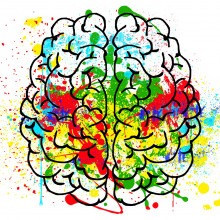
Can we download/upload information to or from the brain?
We put this to Smitha Mundasad...
Smitha - I think that one's a little bit more difficult. I think that brings up a lot of issues. Who controls what you can download? Would you be able to download something from someone else's brain? I think we're a little bit far away from that, but there's a lot of progress in neuroscience, so it wouldn't surprise me if it happened...
Is it true drugs like Adderrall and Provigil do not leave you with a sleep deficit?
We put this to Charlotte Housden:
Charlotte - What these drugs seem to do is they seem to counteract the effects of excessive day time sleepiness. So when you're feeling sleepy during the day, what they do is they allow more stimulation of the prefrontal cortex, making you feel more awake. However, sleep has been shown to be essential for processes such as memory reconsolidation, so that's learning things and processing the things that you've encountered during the day. So although you may not feel as sleepy when you take stimulants such as Adderall and Provigil, actually, you probably should try and catch up on your sleep. That's not the answer. You shouldn't stay awake all the time and just take drugs.
Is there any evidence that St John's Wort works for anxiety?
Chris - I can quote meta-analyses of randomised control trials of St. John's Wort for major depression suggest that it is superior to placebo and it's similarly effective compared with conventional anti-depressant drugs and tends to have fewer side effects. St. John's Wort being a way of actually making your mood elevate. So it's a sort of natural anti-depressant. Although they do say in placebo control trials, trials from German speaking countries tend to report more favourable findings. So I guess the jury is out on that one.
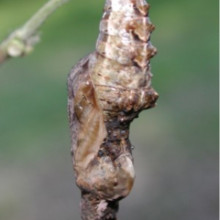
54:52 - What happens when a caterpillar pupates?
What happens when a caterpillar pupates?
We put this question to Chris Jiggins, from the University of Cambridge... Chris J - Okay, so I'm Chris Jiggins from the Department of Zoology in Cambridge. Well obviously, an insect like a butterfly has two different life stages which have very different ecologies and very different requirements. So when you go from a caterpillar to a butterfly, you require a lot of different structures. So, in the pupa, some of the caterpillar structures are carried through into the adult and some of the adult structures are completely developed, from scratch almost, in the pupa. So, the wings for example are unique to the adult and actually, they are present in the caterpillar as little blobs of tissue called imaginal discs. If you know where to look, you can squeeze out a little blob of tissue from the caterpillar which is going to turn into the adult wing.
So in the pupa, some of those structures which are just little blobs of tissue would grow into the wings, and others are developed from the structures already in the caterpillar. So for example, the legs and the antennae; the adult legs grow from a little piece of tissue at the base of the caterpillar legs and the adult antennae in a similar way. Other structures, like the central nervous system, are largely maintained from the larva through to the adult, but all the connections are reconnected. So obviously, there are things like wing muscles which aren't present in the caterpillar which need to be connected up in the adult. There are structures like the malphigian tubules which are to do with excretion which are carried through from the larva into the adult.
So, like most biology, I suppose it's somewhere in between being a complete sludge in the pupa and just producing wings. It's actually a mix of some structures being retained and some being developed.
Diana - But are any bits of the caterpillar discarded?
Chris J - So, the structures that aren't required are basically broken down and the proteins re-used in producing the adult structure. So there are obviously muscles associated with the legs which are completely reconstituted in the adult. So yeah, the protein sludge is not a bad analogy for some parts of what goes on actually.
Diana - Virtually, nothing is wasted by the caterpillar, as some parts of it are retained, and others do indeed become a protein in mush. And did you know that some chrysalides are able to make noises from inside their hard shell in order to scare off predators!
- Previous Clearing Cataracts with Lasers
- Next Bistable Structures









Comments
Add a comment